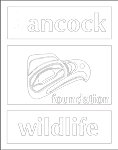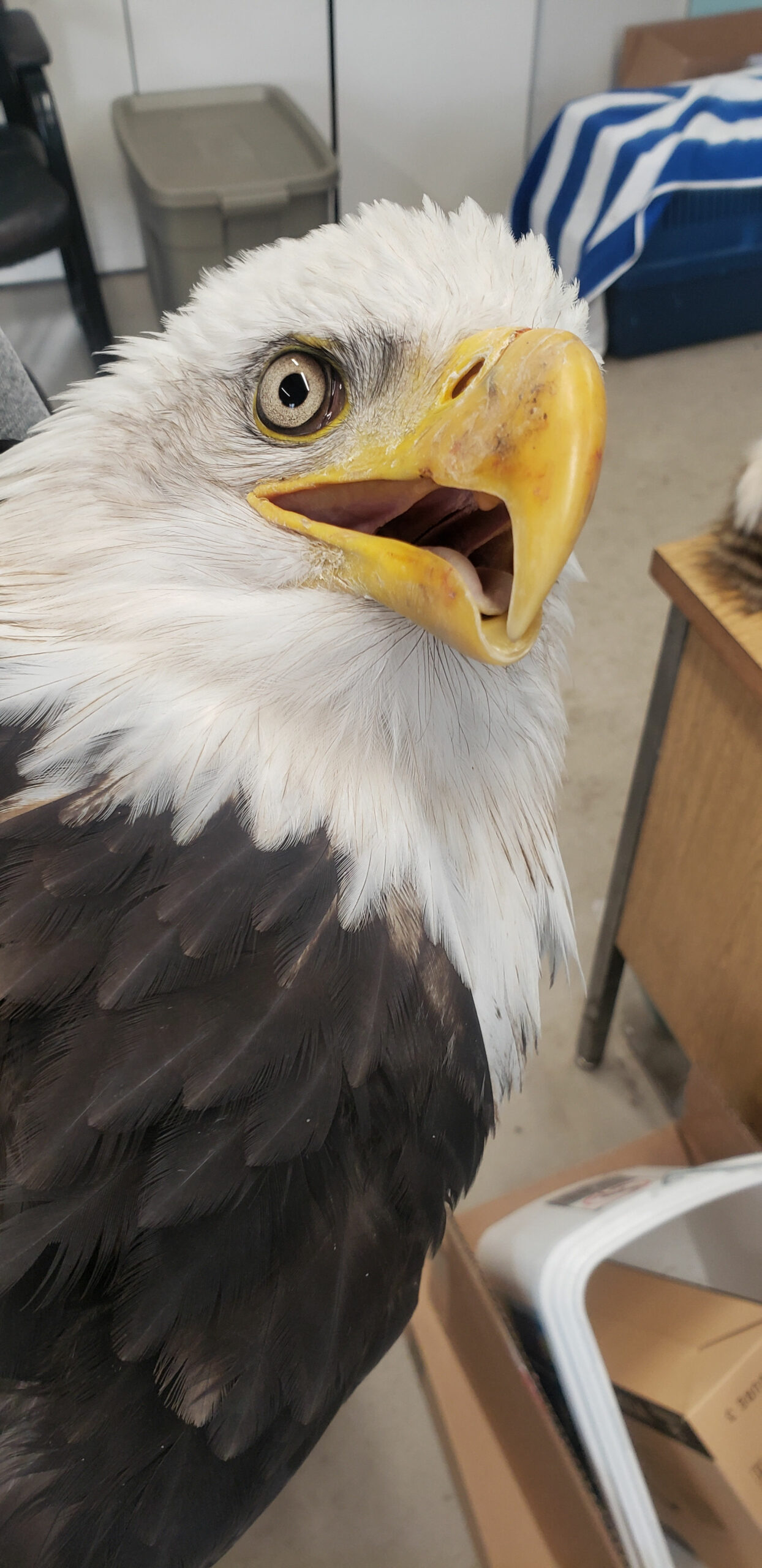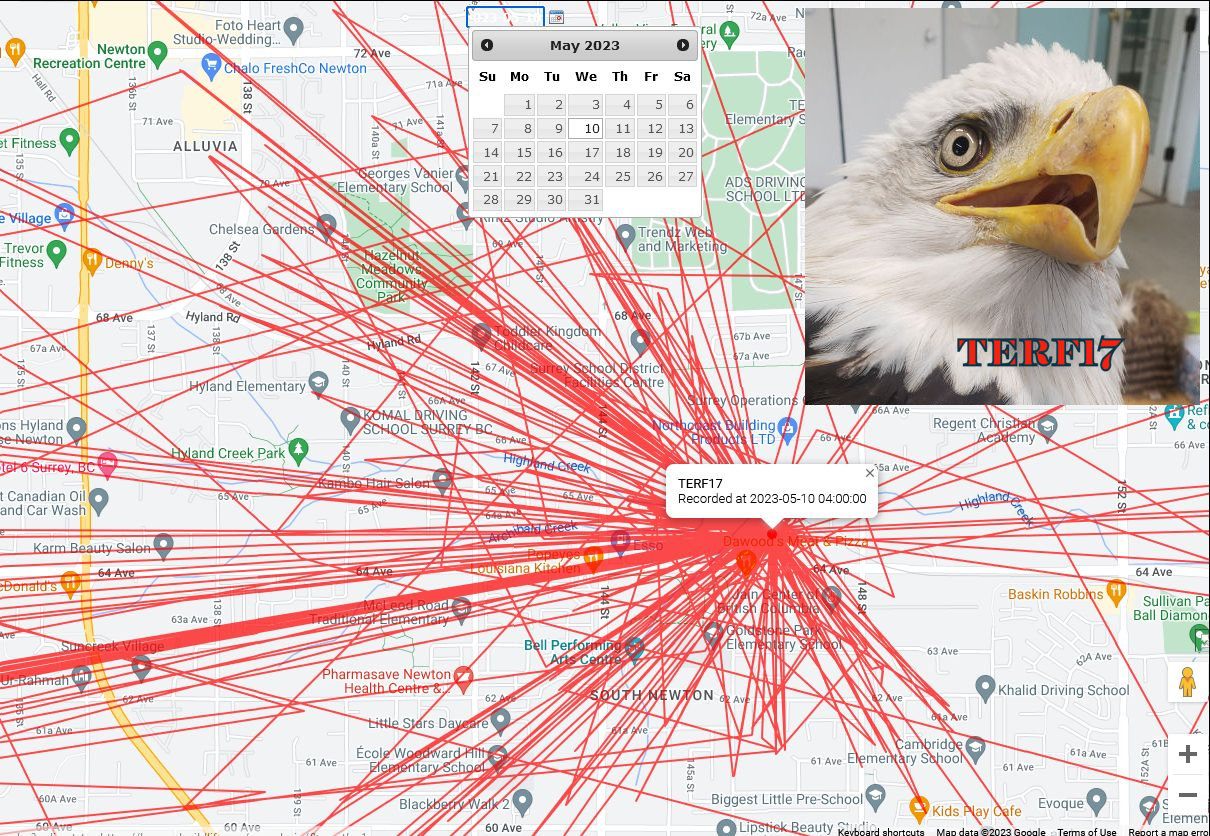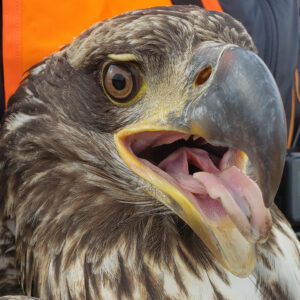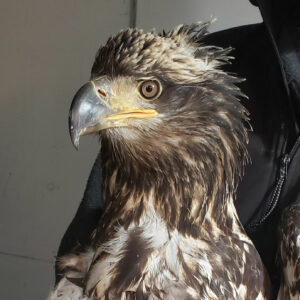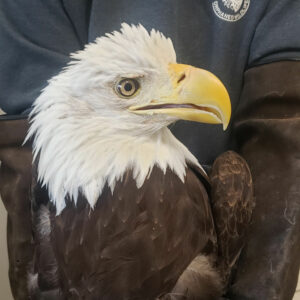TERF17 (tracked 11/4/21-5/10/23)
HWF tracked bald eagle TERF17 is a young female adult who received a tracker on November 5, 2021, at the OWL (Orphaned Wildlife) Rehabilitation Society facility in Delta, BC, after recovering from a fight with another female, TERF16. Myles noted that she was a younger bird with some coloration in her eye and flecking around her head. Her USFW band number is 0679-04620 and she has an easier-to-read blue band on her left leg with the characters K over 7. We’ve learned that she had been at OWL before – she spent a bit of time there in 2015 after having some issues fledging, so she was probably about 6-1/2 in the fall of 2021.
Please visit our Hancock Wildlife Forum thread for more information about what TERF17 has been doing since then.
Thanks to Myles Lamont and the folks at OWL for the photos of TERF17 from November 5, 2021.
Updates
May 31. 2023 – Sad news – TERF17 has died. She had a nest on 64th Avenue near Highland Creek in Surrey (not that far as the eagle flies from the large landfill in Delta), and died on her nest in late April or early May. David Hancock arranged for her body and the tracker to be retrieved on May 10, and they determined that a pair of eagles had claimed the nest. We don’t know if the male was her former mate, and we don’t know if the female they saw there killed TERF17 in a territorial dispute or if she died of other causes.
Please scroll down to see
- a summary of TERF17’s travels
- a post from David Hancock about her death
- an unofficial report from Jack Evans, the wildlife biologist for Fish and Wildlife in British Columbia who did a cursory necropsy on the remains
There are some graphic details in David’s and Jack’s posts – we are a research organization, and those details may be important to future researchers – and it’s fine to stop here or just read the summary of travels.
Summary of Travels
(last updated May 26, 2023)
- Received tracker November 4 2020 at the OWL (Orphaned Wildlife) Rehabilitation Society facility in Delta, BC.
- After being released, she headed east on November 8, towards the Harrison Mills area; she stayed there through December 14.
- She then headed southwest, crossing into Washington State by December 16 and stayed there through the 24th.
- From December 24th through March 1 2022, TERF17 seemed to be based in the Delta area but made lots of jaunts to places like Maple Ridge, Langley and the Pitt River.
- Starting March 2nd, she stayed fairly close to what we have learned was her nest through July 19th, though she did seem to be going farther from the nest in July.
- TERF17 began heading north on July 20th, and crossed over to the Alaskan Panhandle on July 26.
- She spent some time on the mainland across from Admiralty Island from July 29 – August 4.
- She then headed northeast into BC and spent some time along the Nakina River north of Inklin through August 24.
- Next was a quick trip down a series of rivers, past Tulsequah and into Alaska, then back to her preferred spot along the Nakina River again by September 4th.
- She then headed south to the border between Northern BC and the Alaskan Panhandle and stayed near what might be the Whiting River from September 6 to 13, then continued down the Panhandle at a leisurely pace, crossing into BC on October 3rd.
- She spent a few days along the Lakelse River from October 4-8 (it seems to be a popular spot for many of our eagles with trackers), then made good time heading south, checking in from near Squamish on October 12th and reaching her home territory on October 13.
- After (perhaps) a quick check of her nest, she headed east past Mission to the Fraser River, and stayed in that general area from October 14 to 24; she didn’t go as far as Harrison Mills this time, but spent time in an area she’d visited the previous year.
- She arrived back in her territory on October 25, and unlike the previous year, she didn’t do a lot of running around during the winter, limiting most of her excursions to about 1.5 km (a little less than a mile) from her nest. She did make two quick trips to the vicinity of the landfill, about 10km/6mi away, one February 15-16 and the second February 24-25.
- She stayed very close to the nest March 9-19, then was checking in from a bit further out March 20-April 2nd.
- Starting April 3rd, she again stayed close to the nest, at a different location each day, but generally within 15 meters/50 feet of the nest.
- The tracker stopped moving either on or after May 4th (there appeared to be a slight change when I clicked to the 5th but nothing after that).
- We were able to send a drone up several days later, and found that TERF17 was dead on her nest. A climber was able to retrieve her body, but it was too deteriorated to determine a cause of death. There was already another female in the area when the climber was there, so she may have lost a territorial battle, but we will never know.
- The tracker was brought back to Hancock Wildlife on May 10, 2023, and may continue transmitting from that location for a while.
440 Nest – TERF17 Female is Dead – Why?
(Written by David Hancock, May 9, 2023)
The story of the TERF17 female bald eagle who nested at the Su-440A Nest Site is documented on our web site. However, a quick summary and update is needed. This female twice got into difficulties and had to be rescued from the wild and taken to OWL. OWL is the Northwest’s largest and most experienced raptor rehabilitation center. Both times she was deemed recovered, banded and released. On the second release she was also fitted up with one of our “Trackers” to enable us to daily plot her movements, locally and on migration.
This is how we knew she was a breeder at our Surrey nest # 440A. We have followed this nest for about a decade but of course do not know if she was the resident female all that time. Once the tracker told us she was nesting at the site there was great rejoicing. We now had a third tracked adult at a local nest: two females and one male. We would shortly be able to follow some of our nesting adults on their migrations north. How far and how long do they travel?
And a big question still to be left undecided was: would the pair migrate together? This we would not know without both adults being tracked. There was one record of a Washington State pair that, as expected, abandoned their young the same day – and returned after nearly 3 months within a few hours to the nest. Quite incredible. However, they spent the entire time nearly 1000 miles apart – the male on the BC coast around Prince Rupert and the female in the central Northwest Territories at the east end of Great Slave Lake. But one pair does not necessarily define a species. A clue maybe, but not necessarily a population trend. We hope to fill out that knowledge as we are the winter home of some 35,000 plus northern breeding eagles – the greatest wintering home for eagles in the world. And our breeding population is no slouch either!
But, just over two weeks ago, something seemed wrong with female 440. She was too sedentary. She was not making her normal longer journeys to the feeding sites. Was she just being the dutiful incubating and brooding mother when the dad was not properly contributing? Or had something happened to her? One of our monitors made journeys every couple of days to check up on her but nobody ever noted either adult on site. Now, having monitored nesting eagles for 65 years, this was not as unusual as you might expect. But with each ‘empty’ visit the concerns became greater.
Then yesterday Mike and I took one of the drones to check her out. Unlike the day before, when I had spent over an hour trying to view the nest from about 5 different perspectives, we arrived to find both adults in the nest tree. Within 5 minutes the female jumped down on the nest and began feeding. After about 4 minutes the male joined her. After another 6 minutes he jumped back to a perch 7 feet away and she did a complete fluff up and settled down on the nest. She assumed the incubation position.. Was she still sitting eggs? She fed herself but did not feed young. She seemed to be away too long to suggest she had eggs or tiny chicks as the temperature was only about 11-12 degrees Celsius. More disconcerting, no tiny bobble-heads were appearing.
After another 4 minutes she flew off the nest to the nearby favorite perch tree. Both birds remained out of the nest for another hour and 22 minutes. Just before dark she returned to the nest tree. I had good views of her legs and back. No band or tracker were detected. The male was not banded. At one point I thought I saw a possible flash of light reflect off her leg from the dying sunlight but this was on the right leg. The left leg absolutely had no band. The next morning I checked the records and our banded and tracker carrying bird had her blue band on the left leg — opposite to the possibility of any band on this bird.
Myles and I discussed the options. It had occurred to me the night before that this female was probably acting more like an intruder than the resident. She was not undertaking either incubation behaviour or feeding young behaviour. Could she be a replacement female? Was this also a different male? Or the resident male happy to have a new lady? If so was the new female eating her rival in the nest that was still emitting the signal of our tracker? We do not like to even potentially intrude in nests during these key nesting periods but obviously nothing in the order of eggs or chicks was encouraging this female or this male to assume any home duties. No viable eggs or chicks seemed at all possible.
We headed to the site the next afternoon after discussing the possible drone flight with the Wildlife Authorities. The consensus was we should look. If she was not looking after eggs or chicks then the obvious option seems she might be eating the dead parent. When we arrived at the site two adults were soaring above the nest at about a 1000 feet. Within a minute of the drone being airborne Myles said; “Yes – a dead adult”! The mystery was half solved. But the big question was of course ‘Why’ was she dead? Was this another incident of Avian Influenza? Our feared first case for this year! Or was she dead from rodenticide? A bulk garbage transfer station was only a block away and the rat population in the neighborhood was quite substantial, also finding good hiding places along the creek that supported her lovely nest tree.
Tomorrow we hope to retrieve the carcass and hopefully get an autopsy done. If the body is filled with rat poison or lead shot, it might well kill these next “eager nesters”! Dr. Seear, another member of our Scientific Committee re-checked the data and confirmed that AI could not survive more than 48 hours in a dead carcass. This left the likelihood of other poisons, rodenticides or lead shot being the culprit. Or of course there are various other pathogens and bacteria that could re-contaminate these scavengers. Where nest sites are scarce every nest must be kept functional.
Additional Information from Jack Evans
Wildlife Biologist with the Ministry of Forests in British Columbia
For completeness’ sake, you may wish to add a supplementary paragraph or two about our findings from a cursory necropsy of the bird and inspection of the collected nest bowl materials. That examination was completed the day you found the specimen and retrieved it from the side of the nest, 10 May 2023. Feel free to edit or use as deemed necessary.
I still have the well decomposed carcass in the freezer if anyone thinks there is merit to tissue sampling; though I plan to offer the remains to local Nations individuals if I can find a motivated candidate. However as I said at the time, given that larvae present are approaching 3/8” long, in my opinion, internal organs and tissues are far too ripened, protoplasmic soup for there to be anything meaningful for examination. The overwhelmingly pervasive sour aroma from the specimen leads me to make a guestimate the Eagle had been dead for approx two weeks, given recent warm temperatures. If necessary, the SFU researcher that deals with insect development stages correlating date of death and decomposition would be able to provide a far more accurate date, and directly correlated to local weather conditions.
From our cursory necropsy here are my notes:
- Specimen is an adult BAEA of considerable mass (not weighed).
- Decomposition was quite advanced (sour smell). Though there was an absence of extensive areas of slipping for plumage in the usual areas (belly and face). No large areas of slipping were noted. This characteristic is consistent with entry and start of larval foraging at a scavenging site in the body cavity rather than the usual points of entry for developing and foraging larvae at body orifices.
- Rigor mortis had long since passed as indicated by the joints and tissues of the specimen that moved freely and loosely.
- Insect larvae were approx. 3/8” long.
- Extensive tissue was missing from the right wing, first and second joints (humerus, radius/ulna). Feathers and skin were removed from both parts of the wing, for the full lengths of the bones, to facilitate scavenging.
- Large hole in the right side of the body where it appears scavenging had also occurred. The opening was approx. 3” dia. And feathers had been plucked to access these tissues.
- Hole in the side of the body was clearly and deeply open to the internal organs and remnant, decomposed internal tissues visible. Tissues inside the hole were dark-coloured and characteristic of an area of initial concentration of maggot infestation and focus of foraging activity (grey/brown).
- Large scapular feathers and coverts that were missing from the carcass were contained in the nest bowl contents that we examined. These feathers were connected by skin and tissue remnants, indicating they were not moulted.
- We palpitated the head, neck, body, legs, and wings completely to look for wounds that had bled or visible contusions and lacerations as well as broken or disarticulated bones. None were detected.
- No blood or indication of open bleeding was detected on the plumage or in/on the underlying feathers.
- No fractures or disarticulation of the neck vertebrae and skull was detected.
- Wing joints all moved and articulated freely and no aberrations detected.
- Head and feet tissues and feathers all appeared usual for an adult BAEA.
- Feet and scaled tarsi showed no signs of trauma, contusions or damage.
- Mouth showed usual colour for an adult BAEA, a pale pink/flesh-colouration of tissues inside the mouth and throat. No blood or inflammation of these tissues.
- Lower mandible articulated usually and freely.
- No damage to talons, or keratinaceous surfaces of the upper and lower mandibles.
- No obvious exudate from nostrils or the inside of the mouth.
- Overall the feather condition was usual for an adult BAEA as far as broken or bent feather shafts or damage that may have been the result of a prolonged conflict or altercation.
- No egg shell/hatched egg fragments found in nest contents. Also no down or obvious parts of Eagle chicks or fledglings were found in the nest bowl contents.
Final Tracker Updates for Eagle TERF17
This video is part of HWF’s research records. Female adult bald eagle TERF17 was tagged by Hancock Wildlife Foundation in November 2021, and died at her nest in late April or early May 2023. The technology is very old-school – I click a date on the map at the top of the screen to move the red dot to a location the eagle visited that day; because the red dot is hard to see, I attached a marker which unfortunately doesn’t change when the marker moves – but lets you find it quickly. There are four parts to the video. The first one shows her movements between March 1st and May 10, when her body was recovered; the second is zoomed in a bit more and shows the movements from April 1st to May 10; the third is zoomed in closer and shows April 19 to May 10, and the final part shows the same area from April 19 to May 10 in satellite view.
We are continuing to track a number of eagles with happier stories – an overview and links for their maps is here – https://hancockwildlife.org/beta-bald-eagle-tracking-alliance/ – and there are also updates on our forum here – https://forum.hancockwildlife.org/viewforum.php?f=95
~JudyB
Donate via CanadaHelps Now!
Meet (and adopt!) the Eagles we are currently tracking:
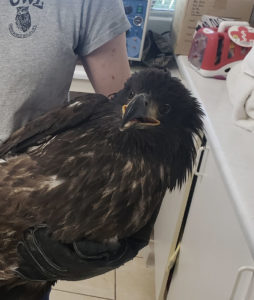
BETA04/Loki (tracked since 7/17/20)
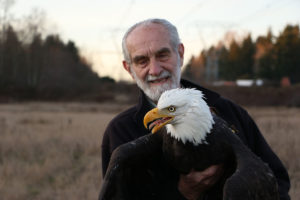
BACA03/Croydon Sr (tracked 12/4/18 – 6/24/23)
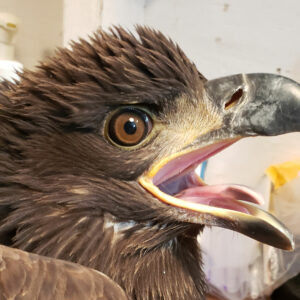
BETA03 (tracked since 11/26/20)
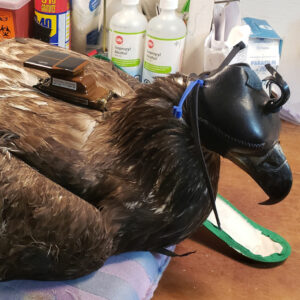
TERF06 (tracked since 11/29/20)
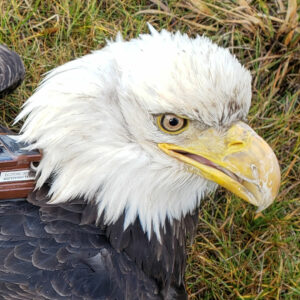
TERF07/Arctic Gal (tracked since 12/12/20)
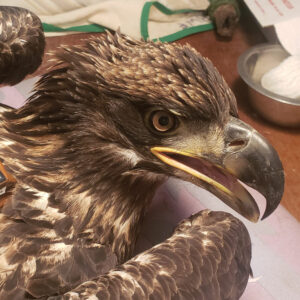
TERF08 (tracked since 12/6/20)
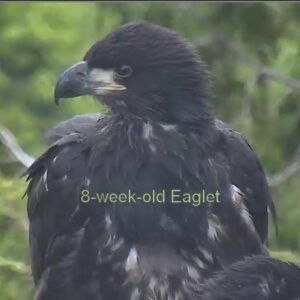
TERF10/Parksville (tracked since 6/7/21)
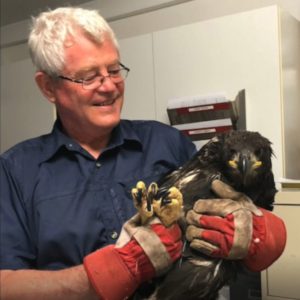
TERF11/Vanier Park (tracked since 7/16/21)
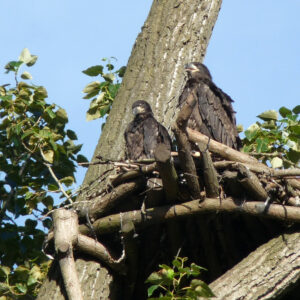
TERF12/Hastings (tracked since 7/28/21)
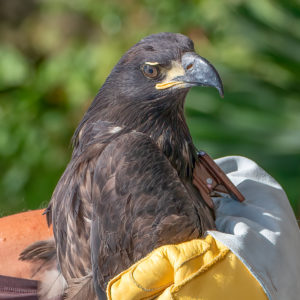
TERF13/Pixel (tracked since 8/4/21)

TERF15b (tracked since 2/19/24)

TERF16/TEUS03

TERF17a (tracked since 2/19/24)
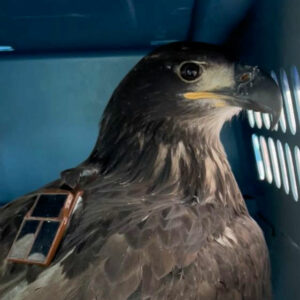
TERF24 (tracked since 1/12/2023)
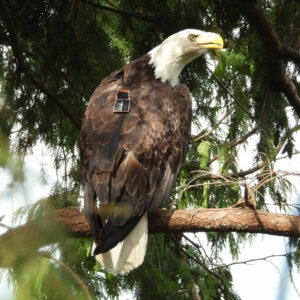
TERF26/Annie (tracked since 7/26/22)
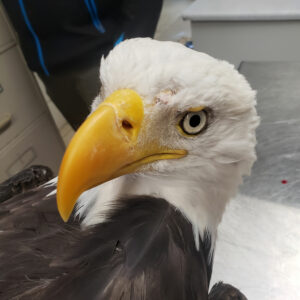
TERF27 (tracked 12/2/22 – 7/16/23)

TERF27a/Bee (tracked since 8/12/2023)

TERF28 (tracked since 12/31/2022)
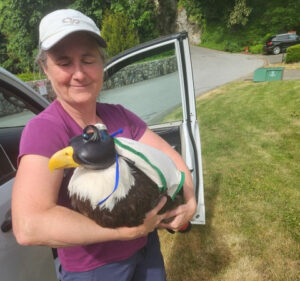
TERF31/Harbour Sun (tracked since 6/16/23)
For further, in depth information about this exciting project, click here
